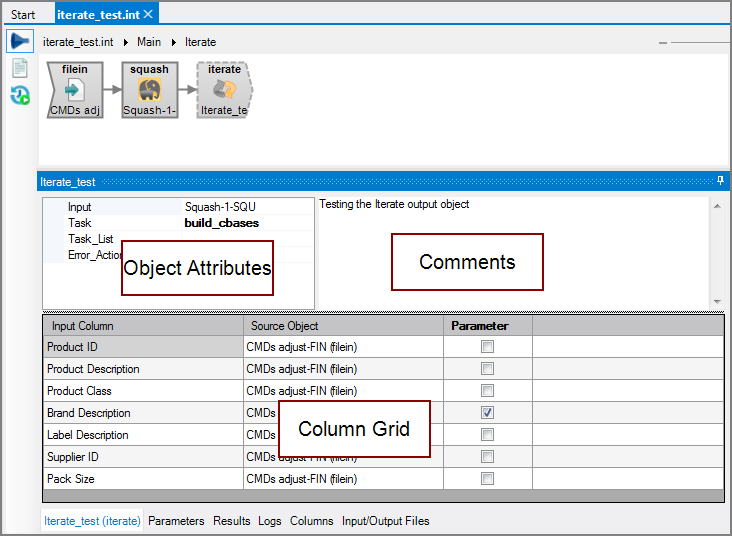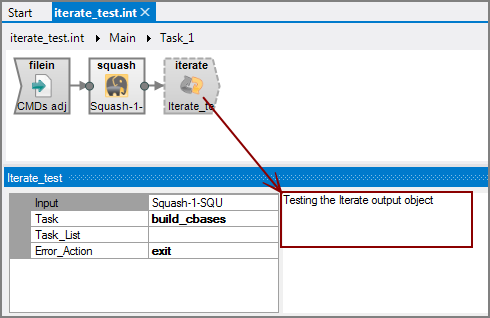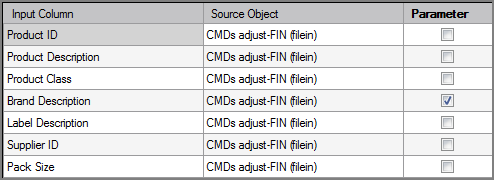The Visual Integrator (VI) Iterate output object iterates a VI task or task list on each row of the input data flow, varying parameters based on input flow columns.
![]()
The Iterate object is similar to the Execrows object, except the Iterate object runs VI tasks instead of running external commands.
NOTE: Since the introduction of DI-Production, DI highly recommends using a Production script to loop through a VI script in order to achieve the same results as using the Iterate output object and multiple tasks in VI.
The Iterate output object has ![]() three panes where you set attributes.
three panes where you set attributes.
You set attributes for the Iterate output object in the ![]() object attributes pane.
object attributes pane.
| Attribute | Description |
|---|---|
| Input |
Defines the object from which the data flow arrives. Use one of the following methods to attach the Iterate output object to an input data flow object:
|
| Task |
Defines the task to iterate from the available tasks that exist within the script. This task should be designed to perform an action on every row of the input data flow based on the parameters set up in the column grid. Choose a task from the Task pull-down list. The Task and Task_List attributes are mutually exclusive, but one must be defined. |
| Task_List |
Defines the task list to iterate from the available task lists that exist within the script. This task list should be designed such that the individual tasks perform actions on every row of the input data flow based on the parameters set up in the column grid. Choose a task list from the Task_List pull-down list. The Task and Task_List attributes are mutually exclusive, but one must be defined. |
| Error_Action |
Defines the action to take if an error occurs while running a task or task list.
|
Each object has an area where you can enter comments.
It is a DI best practice to enter a note for every object in a VI script. You can set a VI preference to give a warning for each object without a note.
You set which input columns are set for use as VI parameters in the ![]() column grid.
column grid.
| Attribute | Description |
|---|---|
| Input Column | Displays the name of each input column. This attribute is read-only. |
| Source Object | Displays the name and object type of the source object. Double-click the Source Object for a column to change the task flow focus to that object. |
| Parameter |
Select the Parameter Any input columns with a check mark in the parameter column automatically populate the |
See also: Parameter Example: Using Iterate.





